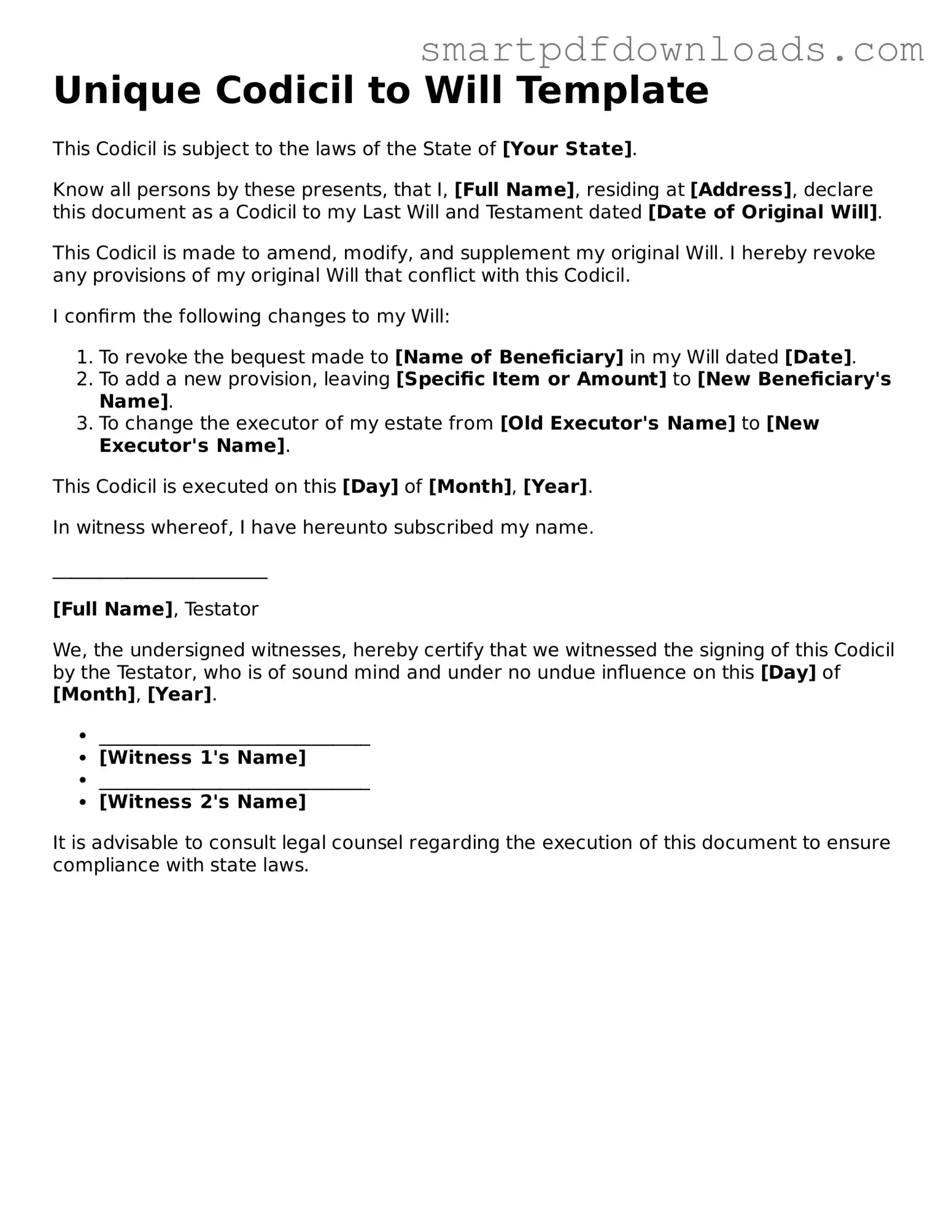Unique Codicil to Will Template
This Codicil is subject to the laws of the State of [Your State].
Know all persons by these presents, that I, [Full Name], residing at [Address], declare this document as a Codicil to my Last Will and Testament dated [Date of Original Will].
This Codicil is made to amend, modify, and supplement my original Will. I hereby revoke any provisions of my original Will that conflict with this Codicil.
I confirm the following changes to my Will:
- To revoke the bequest made to [Name of Beneficiary] in my Will dated [Date].
- To add a new provision, leaving [Specific Item or Amount] to [New Beneficiary's Name].
- To change the executor of my estate from [Old Executor's Name] to [New Executor's Name].
This Codicil is executed on this [Day] of [Month], [Year].
In witness whereof, I have hereunto subscribed my name.
_______________________
[Full Name], Testator
We, the undersigned witnesses, hereby certify that we witnessed the signing of this Codicil by the Testator, who is of sound mind and under no undue influence on this [Day] of [Month], [Year].
- _____________________________
- [Witness 1's Name]
- _____________________________
- [Witness 2's Name]
It is advisable to consult legal counsel regarding the execution of this document to ensure compliance with state laws.
